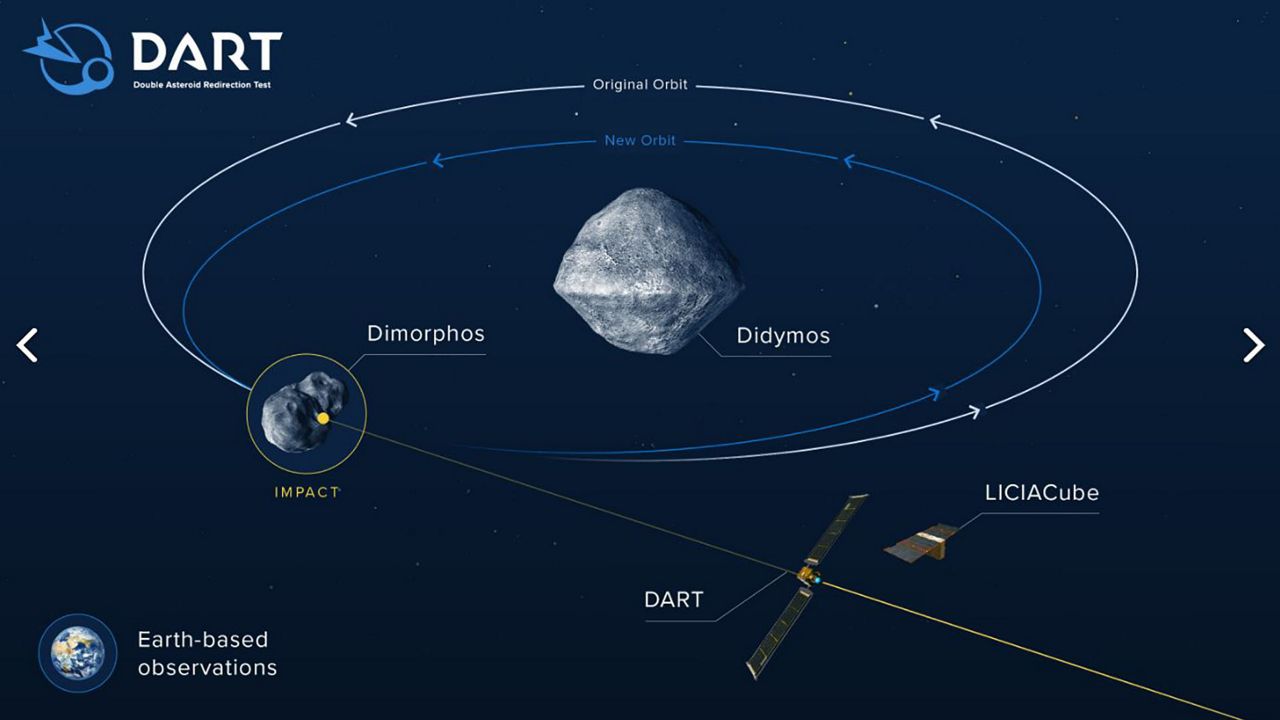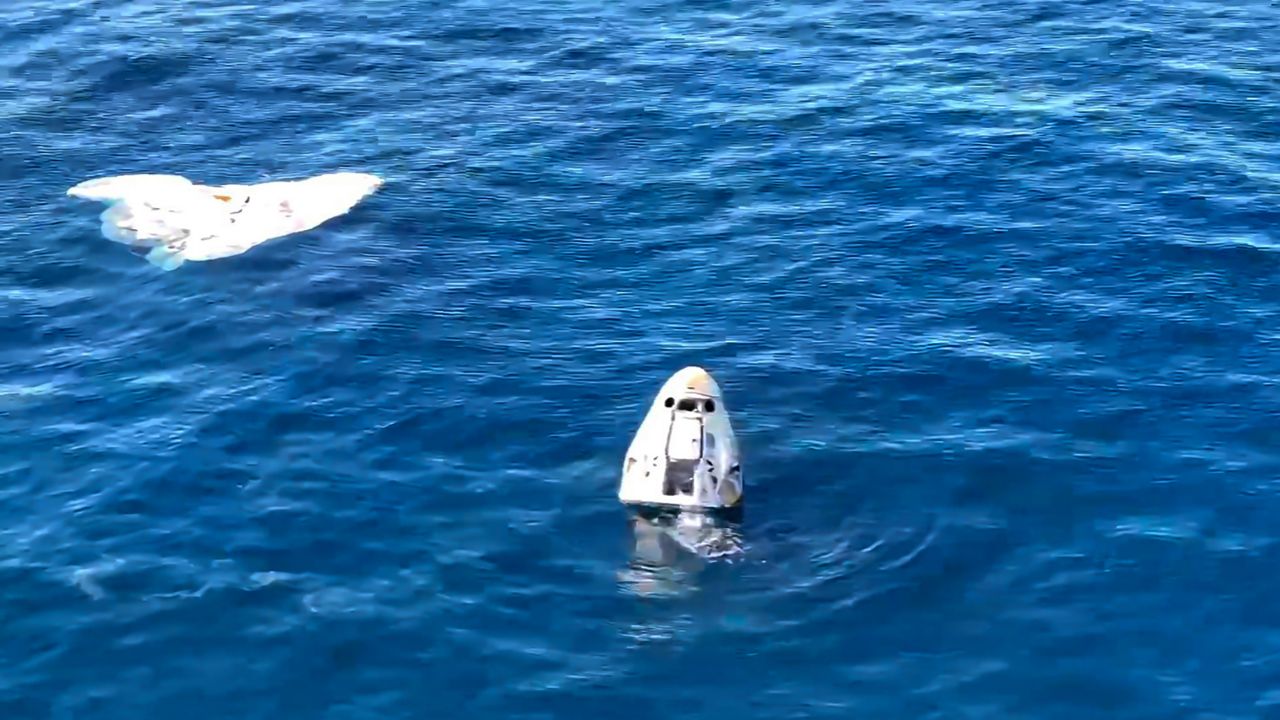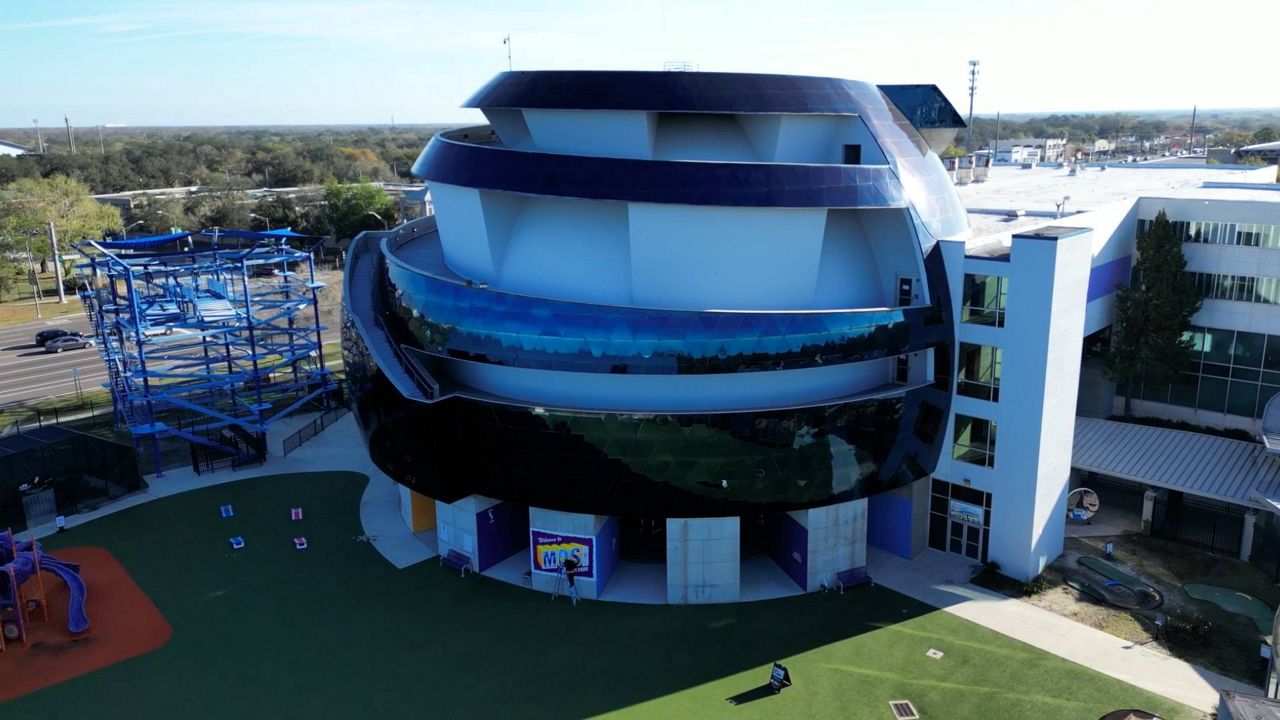KENNEDY SPACE CENTER — NASA officials said Tuesday that the DART mission to redirect the orbit of the asteroid Dimorphos was more successful than they expected.
What You Need To Know
- The DART spacecraft slammed into the asteroid Dimorphos on Sept. 26
- The first planetary defense mission launched on a SpaceX Falcon 9 rocket in November of 2021
- The European Space Agency's Hera mission will fly out to the binary asteroid to observe the DART spacecraft's impact up close in 2026
- RELATED coverage: NASA successfully crashes DART spacecraft into asteroid
During a 2 p.m. EDT press conference on Tuesday, NASA Administrator Bill Nelson said the Double Asteroid Redirection Test (DART) successfully changed the asteroid Dimorphos’ trajectory and the orbit around its big brother Didymos by 32 minutes following the Sept. 26 experiment.
He said the test showed the world that NASA can protect the Earth and called it a unifying international mission and a watershed moment for humanity.
“This mission shows that NASA is trying to be ready for whatever the universe throws at us,“ Nelson said. "I believe that NASA has proven that we are serious as a defender of the planet."
Lori Glaze, director of the Planetary Science Division at NASA headquarters in Washington, explained that the original orbital time of the pair was 11 hours, 55 minutes.
However, the new orbital time for Dimorphos is 11 hours, 23 minutes, a 32-minute difference, she said.
According to mission models before the test, it was expected that the minimum successful change of the new orbital period would be 73 seconds, she said.
But the change was far bigger than expected, she said, making it an even greater historic moment.
“We’re all here this afternoon because, for the first time ever, humanity has changed the orbit of a planetary body,” Glaze said.
Nancy Chabot, DART coordination lead at the Johns Hopkins Applied Physics Laboratory, described how different research teams from different organizations — such as radar facilities at NASA Jet Propulsion Laboratory’s Goldstone planetary radar in California and the National Science Foundation’s Green Bank Observatory in West Virginia — have independently confirmed the difference in orbital time.
Some of these methods include measuring the light from Dimorphos and the differences in the eclipse it creates on Didymos.
“This double asteroid system was such an ideal target to do this first test for planetary defense,” Chabot said.
The larger Didymos and its moonlet Dimorphos originally orbited each other 0.62 miles (or 1 kilometer) apart, but Chabot said that since the collision, they are now “tens of meters” closer.

Tom Statler, DART program scientist at NASA Headquarters, said: “We have been imagining this for years and having it finally be real is quite a thrill.”
However, he did stress that there was a lot of studying that needs to be done to determine the impact of the mission and warned that not all asteroids are the same, as some are solid while others are piles of smaller rocks clumped together.
He said that while DART may not work the same way with another asteroid that is different from Dimorphos, researchers now have a better understanding of what is involved and can make changes.
Chabot pointed out that if there was an asteroid threatening the Earth, time is very important before sending a DART-like spacecraft after it.
“But if you wanted to do this in the future potentially, it could potentially work but you’d want to do it years in advance. Warning time is really key here in order to enable this sort of asteroid deflection to potentially be used in the future and is part of a much larger planetary defense strategy,” she said.
Another thing that will be studied is the surface rock of Dimorphos that was launched into space (called ejecta) after the impact. In fact, the panel described that this recoil of ejecta helped changed Dimorphos’ orbit.
Italian Space Agency President Giorgio Saccoccia telephoned into the press conference and congratulated Nelson on NASA’s successful mission.
Saccoccia also described his agency’s contribution in the form of LICIACube, which was deployed 15 days from DART and followed it to its final destination.

Why slam a spacecraft into an asteroid?
The purpose of the Double Asteroid Redirection Test (DART) mission was part of a planetary defense test.
On Monday, Sept. 26, the self-guiding DART spacecraft (along with its small companion LICIACube from the Italian Space Agency to record the historic event) crashed into the asteroid/moonlet Dimorphos.
The goal was to crash the more-than-6-foot-tall DART spacecraft into Dimorphos, which has a diameter of 525 feet, to see if its orbit around the larger asteroid Didymos would change.
“I believe it’s going to teach us how one day, to protect our own planet from an incoming asteroid,” said Nelson during the Sept. 26 livestream. “I really look forward to learning all about what’s happening from the observatories so they can tell us about the changes in this asteroid’s orbit.”
The pair were chosen to help figure out just how much of an influence the DART spacecraft would make on Dimorphos’ orbit once the cosmic collision happened.
Built and managed by the Johns Hopkins Applied Physics Laboratory for NASA, the DART spacecraft spent about 10 months on a one-way trip to Didymos’ small moon Dimorphos.
And it was just a test. As NASA pointed out, Dimorphos was not a danger to Earth. However, that tiny DART packed quite a punch to Dimorphos.
Since the spacecraft was going at 3.8 miles per second (or 13,680 mph) when it hit the asteroid, the energy that was released was the equivalent of 2.5 tons of TNT, explained Dr. Andy Rivkin, the DART investigation team co-lead at the Johns Hopkins Applied Physics Laboratory, in a previous interview with Spectrum News.
How did we get here?
The DART mission came out of a 2015 collaboration between NASA and the European Space Agency (ESA) called the Asteroid Impact and Deflection Assessment (AIDA).
It called for both agencies to launch a pair of asteroid missions. ESA’s Asteroid Impact Mission (AIM) orbiter was set to launch in December 2020 and then DART in July 2021. AIM was designed to observe and study the asteroid ahead of DART’s impact.
However, AIM was replaced by Hera and it was determined that it would launch after DART to start studying DART’s impact about four years later. Its launch is targeting an October 2024 liftoff.
In 2019, NASA’s Launch Services Program (LSP) at Kennedy Space Center awarded a $69 million contract to SpaceX to launch the DART mission. The mission launched from Space Launch Complex 4E at Vandenburg Space Force Base on Nov. 23, at 10:21 p.m. PST.

A view to remember
At the time of the galactic fender bender, Didymos and Dimorphos were about 6.8 million miles from our little round Earth. As Rivkin pointed out, anyone in their backyard with a telescope most likely could not see the crash.
However, onboard DART was its own camera called Didymos Reconnaissance and Asteroid Camera which captured the historic moment and streamed the images back to Earth.
Many space fans were able to witness this momentous event during a live stream from NASA.
So far, the official NASA broadcast of the DART mission has been viewed more than 5.3 million times on NASA’s YouTube channel. The 1.5-hour-long livestream broadcast showed a near-real time view as the $324.5 million mission reached its epic climax.
Observatories both around the world and in space captured the impact and aftermath of the DART spacecraft smacking into Dimorphos, the small satellite asteroid of Didymos. That included Avengers-style team ups, like pointing both the Hubble Space Telescope and the James Webb Space Telescope at the same target simultaneously for the first time.
DART, you rocked out there. 🪨#ICYMI, Webb and @NASAHubble both captured the effects of #DARTMission colliding with an asteroid as a test of planetary defense. This is the first time both telescopes observed the same target at the same time: https://t.co/CuVzJXyK2F pic.twitter.com/QvgoqBQd8r
— NASA Webb Telescope (@NASAWebb) September 29, 2022
And the tiny LICIACube also helped record the crash.
“The LICIACube cubesat is about the size of a cereal box, and was contributed by the Italian Space Agency. It has two cameras, named LUKE and LEIA,” explained Rivkin before the experiment took place. “LICIACube’s goals are to get images of the debris cloud we expect DART to make after hitting Dimorphos, and get images of the side of Dimorphos that DART won’t see.”
Watching eagerly
Many in the planetary sciences community around the world were eagerly watching both the launch in 2021 and the impact, including at the University of Central Florida (UCF).
Prior to DART’s impact, Planetary Geologist Dr. Kerri Donaldson Hanna emphasized that there were multiple degrees of success for this mission.
“Just the fact that we have gone to this binary system, if we make contact with Dimorphos, then this is considered a success. If we see its orbit change, that’s an even greater success,” Donaldson Hanna said.
One of her students, post-doctoral scholar Audrey Martin, is also part of the international team on another asteroid-based mission: Lucy. She said that it’s exciting to see the number of missions that are going out to study rocky bodies across our solar system.
“There are a lot of near-Earth asteroids that a lot of us asteroid scientists are trying to catalog. And so far, we’re ok, but we want to know and we want to be prepared for if an asteroid is going to cross paths with Earth orbit,” Martin said. “So, this experiment is going to inform scientists and future engineers on exactly what the best way to deflect an asteroid out of Earth’s orbit.”









